Sound: 









Value: 









(Read about our ratings)
 The vast majority of over-ear headphones employ one of two driver technologies. Conventional dynamic drivers comprise a diaphragm with a voice coil attached, positioned in front of a magnet or a collection of magnets. Planar-magnetic drivers consist of a thin film with a circuit trace bonded directly to it in front of or between an array of magnets. In both of these designs, current through the circuit induces a magnetic field that interacts with the field of the permanent magnet(s) to push and pull the diaphragm in response to the audio signal. But since 1959, there has also been another technology used to drive headphones. That’s the year that Stax Ltd. developed its first electrostatic headphone model, the SR-1.
The vast majority of over-ear headphones employ one of two driver technologies. Conventional dynamic drivers comprise a diaphragm with a voice coil attached, positioned in front of a magnet or a collection of magnets. Planar-magnetic drivers consist of a thin film with a circuit trace bonded directly to it in front of or between an array of magnets. In both of these designs, current through the circuit induces a magnetic field that interacts with the field of the permanent magnet(s) to push and pull the diaphragm in response to the audio signal. But since 1959, there has also been another technology used to drive headphones. That’s the year that Stax Ltd. developed its first electrostatic headphone model, the SR-1.
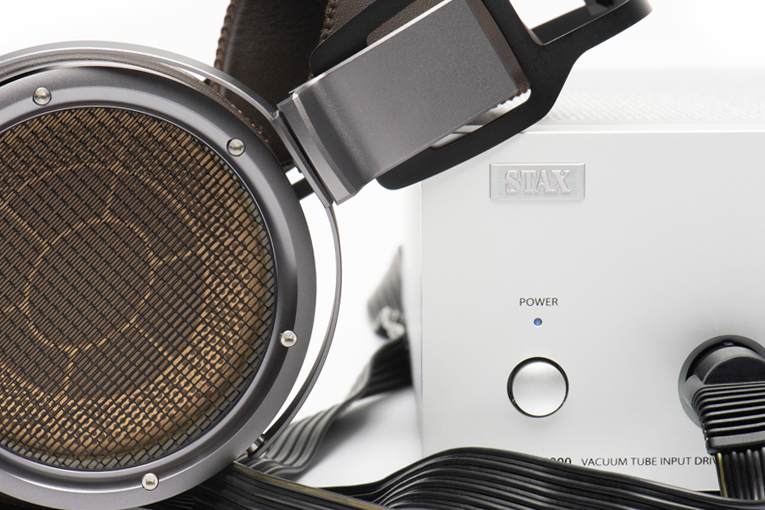
In an electrostatic driver, a very thin film carries an electric charge over its entire surface. That film is suspended between two perforated metal grids, called stators, that carry positive and inverted versions of the audio signal. The varying voltage of the audio signal on the electrode grids drives the diaphragm directly through electrostatic forces. The principal advantage to an electrostatic design is that the diaphragm can be far lighter than that in a conventional dynamic or planar-magnetic driver, giving the potential for improved linearity and transient response.
Description
Stax has a decades-long reputation for producing excellent-sounding headphones, which the company calls Earspeakers, and Stax products have been the preferred choice of many recording engineers and audiophiles. The new flagship of the Stax headphone range, and the subject of this review, is the model SR-X9000 ($6200, all prices in USD), which the company describes as a remake of the SR-Omega headphones introduced in the 1990s.
The drivers in the SR-X9000s employ Stax’s latest-generation multilayered electrode design, combining both mesh and etched electrodes that have been bonded together. Improved rigidity of the electrodes as well as the machined aluminum housing for the drivers reduce resonances compared to earlier designs, and a nonparallel structure for the guard mesh better controls the airflow and reduces reflections. The mass of the thin-film diaphragm has been reduced and its size increased by 20 percent compared to the previous flagship SR-009S model, which Stax claims improves transient response and increases the size of the soundfield.
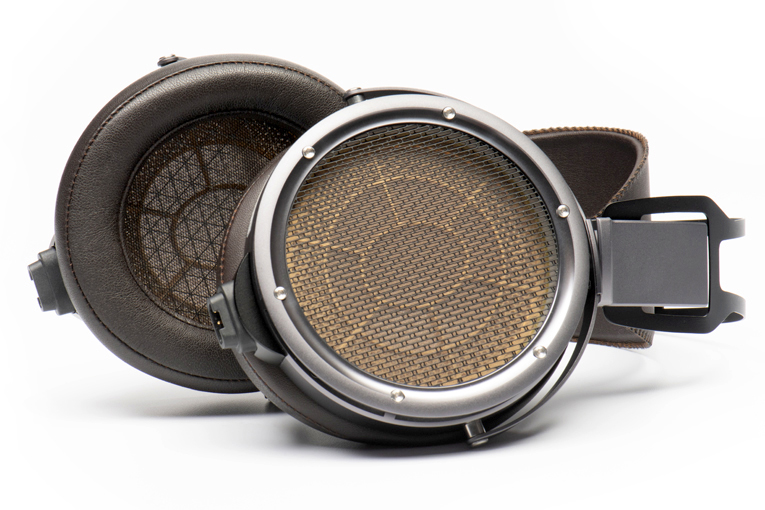
The SR-X9000s are quite large headphones, with wide earcup openings and an arc assembly that sticks up significantly above your head. The earcup openings are so wide, in fact, that the earpads won’t really form a seal for many users. The overall weight is only 432gm, and since the configuration of the arc assembly has only a soft strip of leather resting atop your head, the headphones don’t feel heavy. Adding to their comfort, the covering of the earpads that touches your skin is lambskin, and the clamping force is quite light. The downside to that last characteristic is that the headphones won’t stay in place if you are prone to enthusiastic headbanging.
Due to their different operating principle, electrostatic headphones can’t be driven by conventional headphone amplifiers. The amplifier must be capable of swinging hundreds of volts and must also supply a bias voltage to the diaphragm. To drive the SR-X9000s, Stax sent along their latest flagship amplifier, the SRM-T8000 ($6090).
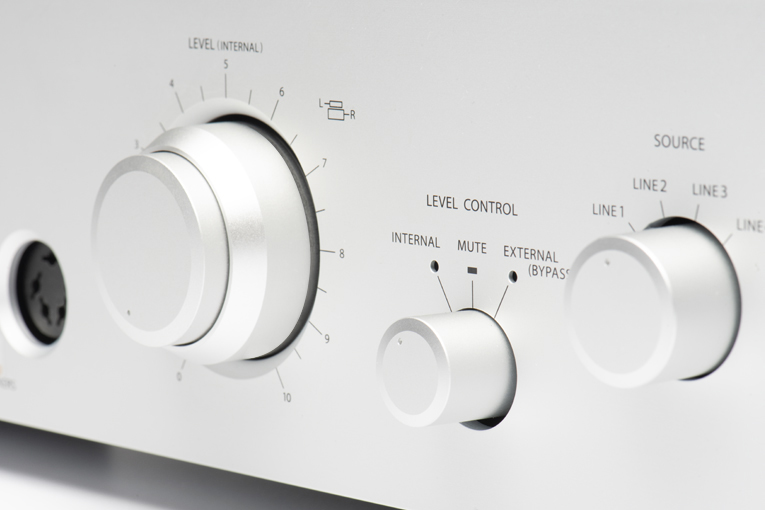
The SRM-T8000 is a hybrid amplifier with two 6922 vacuum tubes in the input stage married to a class-A solid-state output stage. The amplifier uses toroidal power transformers and isolates the vacuum tubes in a separate section to protect them from vibration and noise. On the back of the unit are one pair of balanced inputs (XLR); two pairs of single-ended inputs (RCA), one of which has an associated pair of single-ended outputs (RCA) for daisy-chaining; and a standard IEC power inlet. There is also a slot for a fourth input, although Stax has not announced any plans for modules that might fit it.
The SRM-T8000 measures 4.1″H × 12.6″W × 15.6″D and weighs 16 pounds. On the front panel are two five-pin outputs for simultaneously driving two pairs of headphones with 580V bias voltage (the Stax standard for several decades). There’s a knob for selecting between the four inputs and another for choosing whether the volume is controlled internally, controlled externally, or muted.
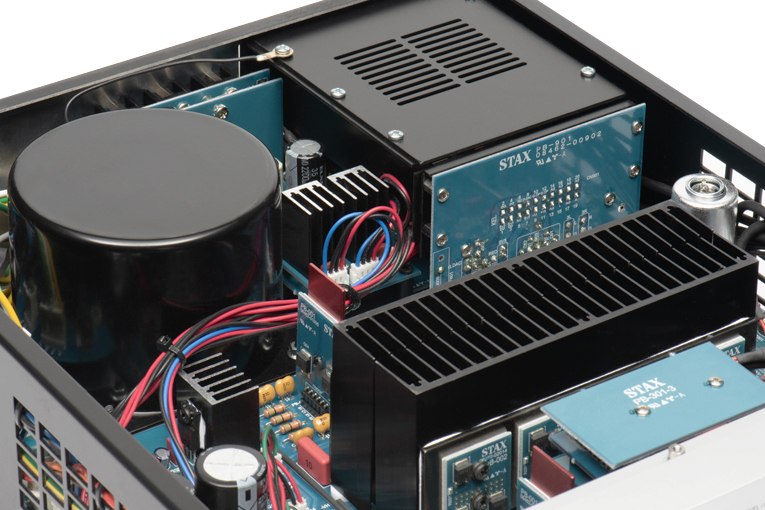
The SRM-T8000’s volume knob has two parts: the forward section controls the left channel, and the rear section controls the right. These two parts normally turn together, but can be turned separately to adjust the stereo balance. Lastly, there is a power switch. When pushed, it initiates a soft-start sequence that warms up the tubes for several seconds before allowing a signal to flow.
In the box
The SR-X9000s come in a presentation-quality storage box made of paulownia wood—a very light hardwood that Stax says has “low thermal conductivity and humidity control capacity.” Unlike any other model of Stax headphones with which I am familiar, the SR-X9000’s cable is detachable. Two lengths are provided: 1.5m and 2m. Since the six-conductor Stax cables are quite heavy, this is a boon in those situations where you only need a short cable. The SRM-T8000 is supplied with a power cord and a pair of generic RCA interconnects. Each device also includes an owner’s manual.
Setup
I did the majority of my listening using my Ayre Acoustics C-5xeMP universal disc player connected to the SRM-T8000’s balanced inputs with a pair of DH Labs Revelation XLR-terminated interconnects. I also used my Grace Design m900 DAC/headphone amplifier connected to the SRM-T8000’s single-ended inputs with a pair of QED Silver Spiral interconnects. The Grace was plugged via USB into my Lenovo ThinkStation P520c computer, which served up the bits from Tidal and foobar2000. I did try driving the SR-X9000s with my own Woo Audio GES electrostatic headphone amplifier, which sounded very pleasant, but it could not exploit the extended frequency response, level of detail, or dynamics of which I found the SR-X9000s capable. Hence, all of my comments refer to driving them with the SRM-T8000.
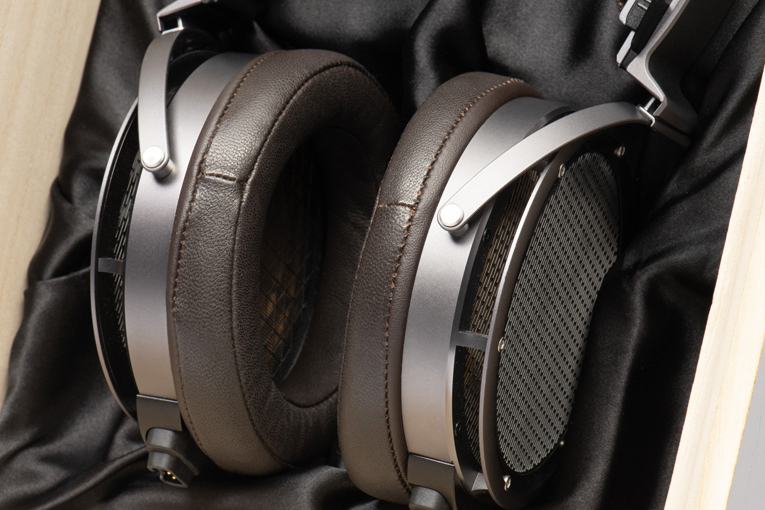
As is typical with most amplification, tubed or solid-state, I found the sound a little thin when the amplifier was cold, so took to letting it warm up for at least half an hour whenever I was planning on listening. The 60dB of gain provided by the SRM-T8000 was more than enough for my sources. In fact, with the fairly typical output of the Ayre, I found I could only use a limited range of the volume control, necessitating fine movements to dial in my preferred level on each recording. Fortunately, the channels tracked together well, which is not a given for this sort of volume implementation. The product samples Stax sent me had made the rounds of other reviewers, so they were already thoroughly broken in.
Sound
The first recording I played through the SR-X9000s was Beethoven’s Symphony No. 5 with the Minnesota Orchestra conducted by Osmo Vänskä (SACD, BIS Records BIS-SACD-1416). I was immediately impressed by the size and openness of the soundstage. While sounds weren’t imaged around me in the same way as with a good binaural recording, they felt far less inside my head than with any other headphones I’ve recently heard and, if memory serves, at least comparable in expansiveness to the sound of the Sennheiser HD 800 headphones. There was real layering, with the woodwinds behind the strings, the brass behind them, and the percussion in the back. They even delivered a clear impression of the hall’s acoustics; I don’t believe I’ve ever heard such natural decays before. But, despite the scale of the soundfield, I could still focus on individual orchestral sections or instruments when I chose to do so. Repeated listening to the same track showed me that it wasn’t the headphones making certain instruments stick out, because my attention wasn’t always drawn to the same thing. It felt more as though I could wander through the orchestra, stopping beside whatever section intrigued me at that moment.
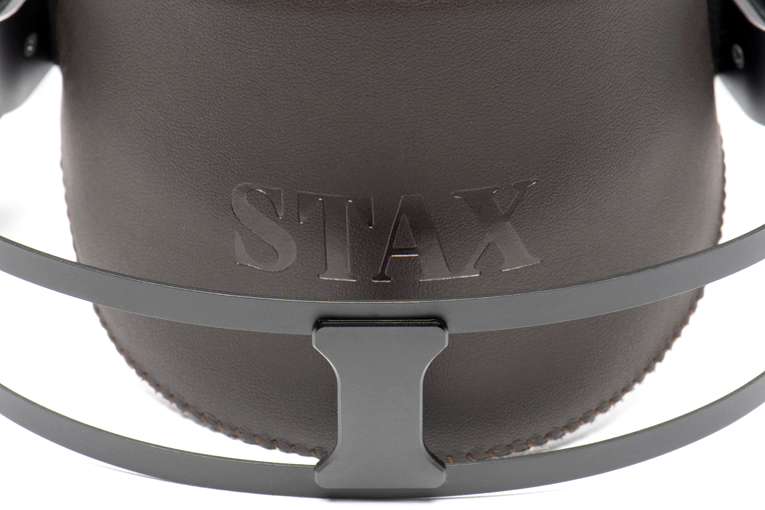
The SR-X9000s’ tonal balance emphasizes the upper midrange and lower treble, which gives an added sense of presence and enhances detail. For example, they rendered the cello lines in the third movement with copious texture of horsehair on strings, but a little less body than one hears in the concert hall. Similarly, the sound of the bassoon focused a little more on its reediness and a little less on each note’s fundamental pitch. The contour of the frequency response isn’t unreasonable, though, and the SR-X9000s’ treble is not at all hot. The upper instruments, like violin and oboe, were portrayed beautifully, and when the brass crescendos into the fourth movement, their sound was rendered with brilliance, but with no sense of glare or stridency. Transients, such as the pizzicato strings, were superbly clean and clear but without any exaggeration.
The SR-X9000s’ bass is a little low in level, but goes very deep and is exceptionally well controlled. The bass drum that opens the Kyrie from José Carreras’s famous recording of Ariel Ramírez’s Misa Criolla (CD, Philips 420 955-2) sounded appropriately large. Not only could I hear the low fundamental frequency, but also the way the sound reverberated off the walls of the Santuario de la Bien Aparecida (in Cantabria, Spain). Of course, the sound of a bass drum is more than just its fundamental pitch. The SR-X9000s portrayed the complete sound of the drum, including the looseness of the drumhead (generally a characteristic of concert bass drums), such that I could easily picture the instrument.
Carreras’s voice was rendered with exceptional purity, albeit with a touch more emphasis on his head voice and a touch less on the resonance that comes from the chest. As they did with the orchestra on the Beethoven recording, the SR-X9000s spread out the choir seemingly in three dimensions. And while I can’t say that I could make out individual voices, they did portray the choir as the collection of singers that it is rather than as a simple blend of sound.
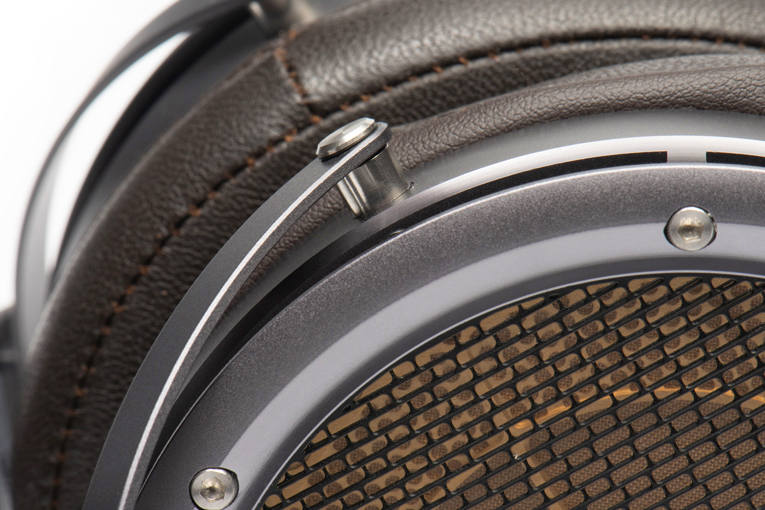
Another big bass drum that impressed me through the SR-X9000s was that on the finale from Stravinsky’s Firebird Suite performed by the Minnesota Orchestra conducted by Eiji Oue (24-bit/176.4kHz WAV, Reference Recordings). Instead of the soft taps that open Misa Criolla, this track begins with an almighty wham. Hearing it through the SR-X9000s put to rest any notion that electrostatic headphones can’t deliver dynamics. But that initial explosion of sound was followed by a clean decay that situated the drum in the performance space. Soundstaging was again excellent, with precise outlines of instruments placed in solid relationship to each other in a believable acoustic environment. And, although I chose this track to assess the SR-X9000s’ bass extension and dynamic abilities, their reproduction of the lighter elements was equally revelatory. For example, the sound of the xylophone, from its crisp—but not overly crisp—attack to its woody resonance, was as good as I’ve heard it.
Turning to jazz, John Clayton’s upright bass on Diana Krall’s Live in Paris (CD, Verve 4400652522) spoke cleanly and evenly, and Anthony Wilson’s guitar came across with great tone and articulation in equal measure. One of the reasons I prefer Live in Paris to most of Krall’s albums is that it shows off her piano chops. Though the SR-X9000s favored the right side of the keyboard, the piano never sounded hard, and all her variations in touch were brilliantly conveyed. Like with Carreras, Krall’s voice had a presence and clarity that I haven’t heard elsewhere.
To hear what the SR-X9000s would do with the bass on a modern pop recording, I streamed Charli XCX’s “360” (BRAT, 24/44.1 FLAC, Atlantic Records / Tidal). There was enough bouncy bass to keep the track sounding fun. It was, however, bass that was heard rather than felt. I missed the bass energy more on Bad Bunny’s “Tití Me Preguntó” (Un Verano Sin Ti, 16/44.1 FLAC, Rimas Entertainment / Tidal), where a certain amount of eardrum pummeling just feels right.
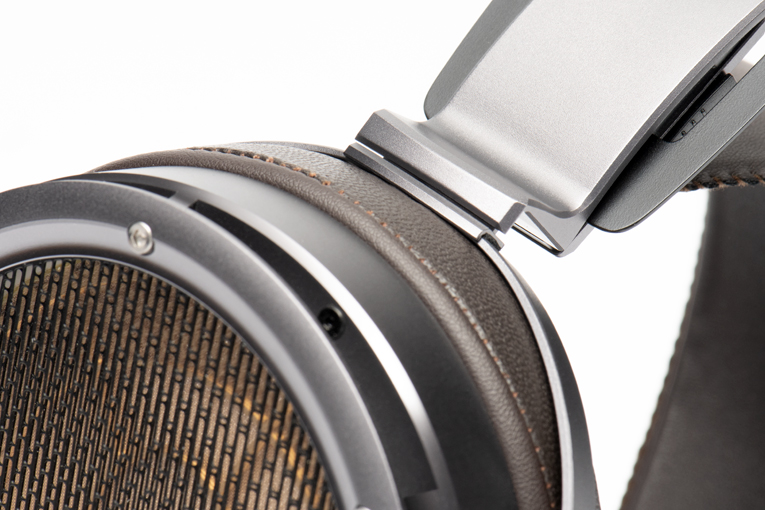
Given how well the SR-X9000s did with the soundstaging on the classical recordings, I put on one of my favorite densely mixed rock tracks: “Layla” by Derek and the Dominoes (Layla and Other Assorted Love Songs, SACD, Polydor B0003640-36). As with the previous recordings, I’ve never heard another pair of headphones weave the sonic tapestry as well as the SR-X9000s did. And while I could easily follow individual elements of the mix, it still sounded entirely cohesive. The one shortcoming was that, at a volume that delivered the energy I wanted from the song, the guitars seared a little more than I wanted to listen to for the whole album.
SR-X9000 versus SR-009S
The most obvious headphones with which to compare the SR-X9000s were the SR-009Ses ($4545), Stax’s previous flagship ’phones, so the company loaned me a pair of those as well. They have a similar headband arc assembly and leather-covered earpads, although their construction doesn’t feel quite as robust as that of the SR-X9000s. These are still large headphones, but the earcups are noticeably smaller—closer to those on most full-sized over-ear headphones. Although the earpads hugged my face a little more, I would still consider the clamping pressure light, and the SR-009Ses were equally comfortable. The cables on the SR-009Ses are not detachable, so you are stuck managing the long cable even if your listening environment doesn’t require it. The SR-009Ses come in a similar presentation box to that of the SR-X9000s.
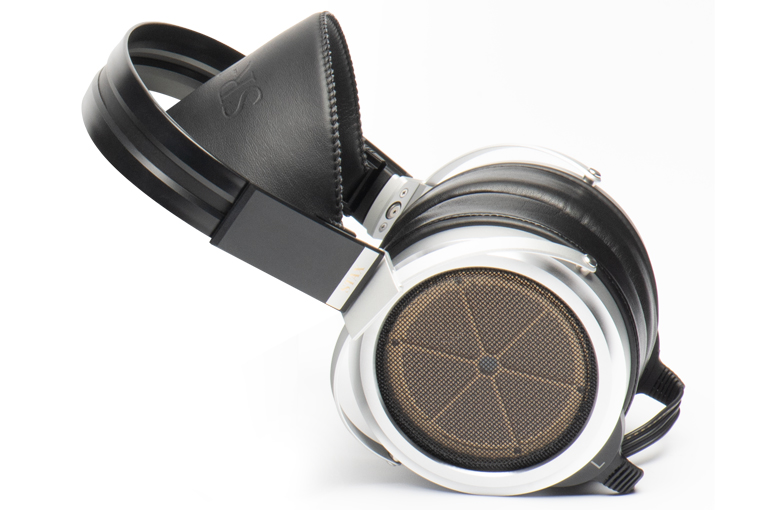
Thanks to the dual outputs on the SRM-T8000, it was easy to switch back and forth between the headphones when making comparisons. But, although Stax lists the sensitivity of the SR-009Ses as 101dB/100V (RMS) at 1kHz, sensitivity for the SR-X9000s is specified only as 100dB without a reference frequency. In practice, at a given position on the volume knob, the SR-009Ses sounded a few decibels louder than the SR-X9000s, so I adjusted to keep the subjective volume similar. The tonal balance of the SR-009Ses is centered lower than that of the SR-X9000s, somewhere in the lower midrange. Some might refer to the balance as warm, but I wouldn’t go so far as to call it dark. On “Layla,” the SR-009Ses tempered the guitars to give a more pleasing balance for high-volume listening. And, while these are still not bass-heavy headphones, the increased low-end did augment the physicality of “Tití Me Preguntó.”
An album that revealed many of the tradeoffs between the two models’ presentations was the Robert Plant and Alison Krauss collaboration Raising Sand (CD, Rounder 1161-9075-2). Both Krauss’s and Plant’s voices were clearer through the SR-X9000s, while they were somewhat subdued through the SR-009Ses. They were both a little thinner through the SR-X9000s. For Krauss, a soprano, this was less of a problem, but Plant sounded a little too nasally without the chest tones to provide balance. Overall, I felt the higher relative bass and mid-bass on the SR-009Ses to be more complementary to this music, but I appreciated the greater cleanliness and openness of the bass through the SR-X9000s. The sense of atmosphere is a significant component of “Sister Rosetta Goes Before Us,” and the song was notably more spacious through the SR-X9000s, whereas the SR-009Ses, though still delivering excellent space and layering, were not quite as far ahead of other good full-sized open-back headphones. Lastly, though the SR-009Ses are generally warmer/mellower, there was a zinginess to the banjo that suggests a narrow treble peak; the SR-X9000s delivered a brighter and equally articulate sound without the zing.
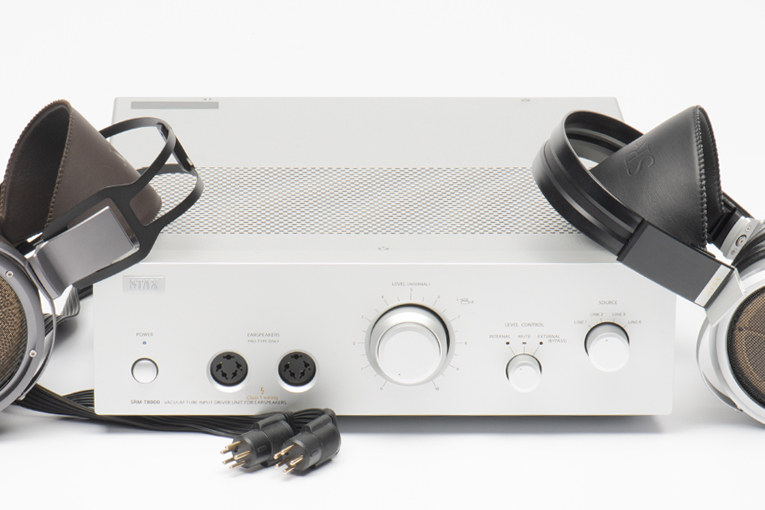
There wasn’t a clear winner with symphonic music either. The full or low frequencies of the SR-009Ses made the Minnesota Orchestra sound grander on the Beethoven recording; it was as if the orchestra had double the number of cellists and bassists. The brass sounded a little darker and more burnished, but there was an occasional hint of hardness in some louder passages that simply wasn’t there on the SR-X9000s. Unlike with the banjo on Raising Sand, the pizzicato strings were nearly as clean through the SR-009Ses as they had been through the SR-X9000s, and there was a touch more of the instruments’ wooden bodies supporting the strings. Where the SR-X9000s were definitively better was in soundstaging. There was just more space, and sound sources were placed even more precisely within it. The perspective was more front row or conductor’s podium with the SR-X9000s and a little further back with the SR-009Ses.
Electrostatic versus planar-magnetic
Over the past decade, many of the top headphone designs have used planar-magnetic drivers. As explained above, planar-magnetic and electrostatic drivers are similar in that both use thin-film diaphragms. The requirement for bonding a circuit to the planar-magnetic diaphragm, however, means that it cannot be made as light as an electrostatic diaphragm. The advantage to planar-magnetics is that they can be driven by a standard headphone amplifier and in some cases directly from any headphone jack.
I had two planar-magnetic headphone models on hand for comparison: the Audeze LCD-X ($1199) and the Quad ERA-1 ($799). Both are full-sized over-ear designs with earcups similar in size to those of the SR-009Ses. At 418gm, the Quads are similar in weight to the Stax models, while the 618gm Audezes are noticeably heavier. None of these headphones are uncomfortable, but the leather strap of the Stax arc assembly made both pairs of electrostatic headphones more comfortable for long listening sessions. The ERA-1s come with both leather and velour earpads, but in this comparison I stuck to the leather pads. I drove both planar-magnetic headphone pairs from the outputs of the Grace m900 and used its line-level outputs as the source for the SRM-T8000.
Listening to that favorite track of audio reviewers, Tracy Chapman’s “Fast Car” from her eponymously titled album (16/44.1 FLAC, Elektra Records / Tidal), elucidated the differences in the headphones’ tonal balance. Chapman’s voice was the most neutrally balanced through the Audezes. The harmonics in the presence region were slightly muted through the SR-009Ses, making her voice a little laid-back. It was the cleanest and most focused through the SR-X9000s, although as with other voices, I felt it was a little lighter than strict neutrality would dictate. The ERA-1s were mostly between the LCD-Xes and the SR-X9000s, but with an added brightness in places that went beyond what I think is actually on the recording.
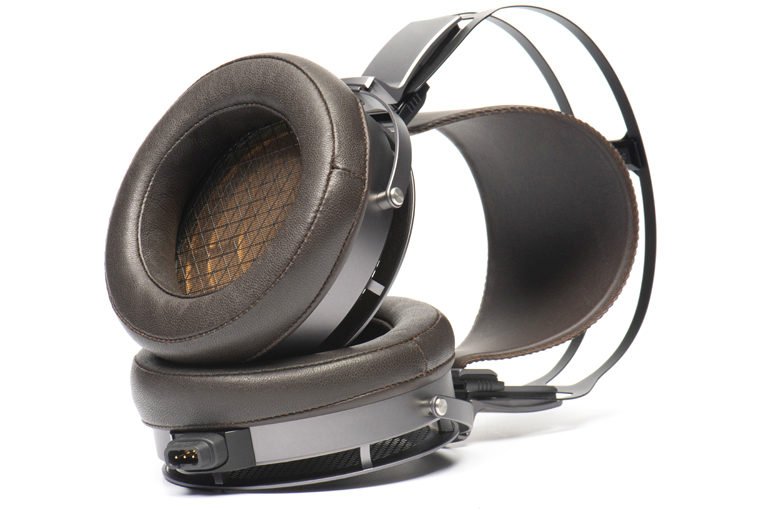
The Audezes had the most bass weight, followed by the SR-009Ses, the Quads, and the SR-X9000s, in that order. On the other hand, both pairs of electrostatic headphones delivered greater tunefulness and shape to bass notes. While I complimented the SR-X9000s’ facility with dynamics, the Audezes delivered more slam to the bass drum in the Firebird Suite.
These are all fairly open-sounding headphones, but the SR-X9000s are the most so and the LCD-Xes are the least—seeming to round off the high treble a bit. Beyond frequency balance, there is just something different about electrostatic headphones—whether the SR-X9000s, the SR-009Ses, or the Stax SR-507 Lambda Signatures I have been using for a decade—that gives a sense of transparency I haven’t heard from non-electrostatic designs. Stax aficionados have long been willing to give up bass, dynamics, and convenience for that transparency, but with either the SR-009Ses or the SR-X9000s, they are forced to give up very little.
Conclusion
After more than 60 years, Stax is continuing to push the performance envelope of electrostatic headphones. Stax’s previous flagship, the SR-009S Earspeakers, remain excellent transducers, and some listeners may yet prefer them for their more laid-back tonal balance and stronger bass, but the new model improves on things they already did extremely well. The SR-X9000 Earspeakers driven by the SRM-T8000 sound extraordinarily clean and transparent. Their soundfield is exceptionally large, three-dimensional, and open-sounding without sacrificing detail and precision. If you can afford to spend five figures on a headphone system, this is one you need to hear. Even if you can’t afford it, you should try to hear Stax’s top-of-the-line system at an audio show; it’s one of the finest headphone experiences available.
. . . S. Andrea Sundaram
Associated Equipment
- Headphones: Stax SR-009S, Stax SR-507 Lambda Signature, Audeze LCD-X, Quad ERA-1
- Headphone amplifiers: Woo Audio GES, Grace Design m900
- Digital sources: Ayre C-5xeMP, Grace Design m900
- Interconnects: DH Labs Revelation, QED Silver Spiral
Stax SR-X9000 headphones
Price: $6200
Warranty: One year, repair or replacement
Stax SRM-T8000 amplifier
Price: $6090
Warranty: One year, repair or replacement
STAX International
Room 2101, 21st floor, The L. Plaza,
367-375 Queen’s Road,
Central - Hong Kong
Phone: +852 2522 6989
Fax: +852 2522 1989
Email:
Website: www.staxheadphones.com






